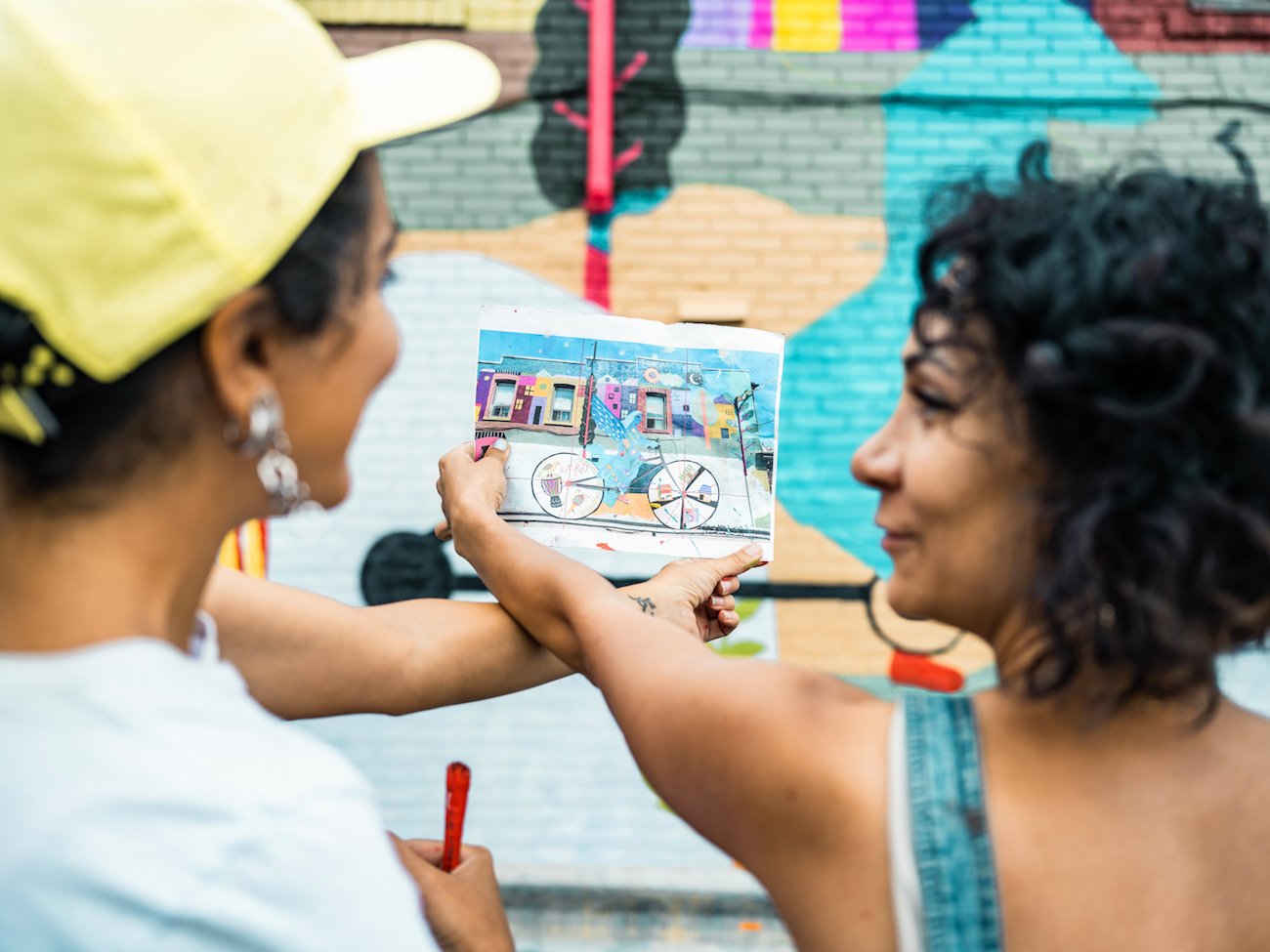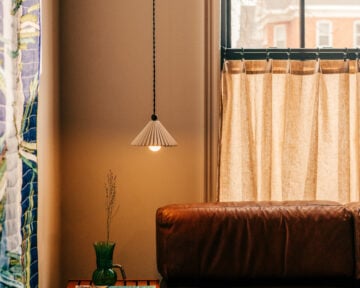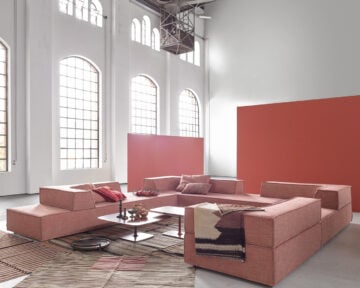Sketching The Spirit of Kensington Market

In one of the city’s most distinct and vibrant communities, a new mural reveals the impact of creative placemaking
Near the southeast corner of Kensington Market, at Dundas Street and Denison Avenue, a two-storey mural now greets passersby with a display of bright colours and playful motifs. Led by DIALOG urban and landscape designer Khatereh Baharikhoob, the mural, titled A Ride To Joy, positions art as a catalyst for community engagement, and is a testament to creative placemaking and its ability to activate and revitalize public space.
“Fundamentally, creative placemaking is about bringing together a diverse group of people to physically and socially energize a part of the public realm through art and cultural expressions,” says Baharikhoob. “In that spirit, this project was driven by the support and engagement of many Kensington Market community members including business owners, artists and residents alike.”
The creation of the mural was funded by an internal DIALOG scholarship received by Baharikhoob in 2021, and completed in August of the following year. Today, its impact exists beyond the west wall of 620 Dundas Street West, and within each of the community members who have forged a sense of place and togetherness over the course of its creation.

After months of location scouting across the city, Baharikhoob landed on the neglected lot in Kensington Market for its high visibility and potential as an inclusive neighbourhood landmark. “As an urban designer, whenever I enter a new community, it’s important I first learn about its demands, challenges and aspirations,” says Baharikhoob. “Kensington Market has a strong sense of pride and preservation, and it understandably took some time, as a non-resident, to earn the trust and approval of the community.”
At varying intervals throughout the ideation process, public feedback boards were installed in Bellevue Square Park to ensure that a range of voices were heard and that the cultural values of the market were addressed in the final design. The winning piece, by visual artist Yasaman Mehrsa, embodies the spirit of the market with local cues nodding to neighbouring businesses and the land’s Indigenious history.

Mehrsa was selected for her extensive experience leading community-engaged public art across Toronto. “Her artistic vision reflects the values of creative placemaking that inspired this project,” says Baharikhoob. “She even welcomed community members to get their hands dirty and paint with her.”

Artist Yasaman Mehrsa (left) and DIALOG urban designer Khatereh Baharikhoob at the Kensington Market mural.
The mural wall spans a residential unit entrance and the exterior of Kensington-staple African Drums And Arts Crafts. It has also become an identifying mark for neighbouring business Kensington Automotive — a mechanic shop now dubbed “the one with the mural,” says Baharikhoob. Adding that the shop has even become a destination for local tours. “The initiatives that creative placemaking can offer provide many advantages for neighbourhoods in our city including economic development,” says Mehrsa.
If there’s one thing Baharikhoob wants viewers to learn from this project, it’s to take art more seriously. “The strategic placement of even small-scale public art, especially in underutilized or disadvantaged communities, can even have a large impact on quality of life.” For a city in constant evolution, fostering a sense of identity, pride and connection through art might just be what we need to future-proof our neighbourhoods in a way that preserves history and inclusivity.










